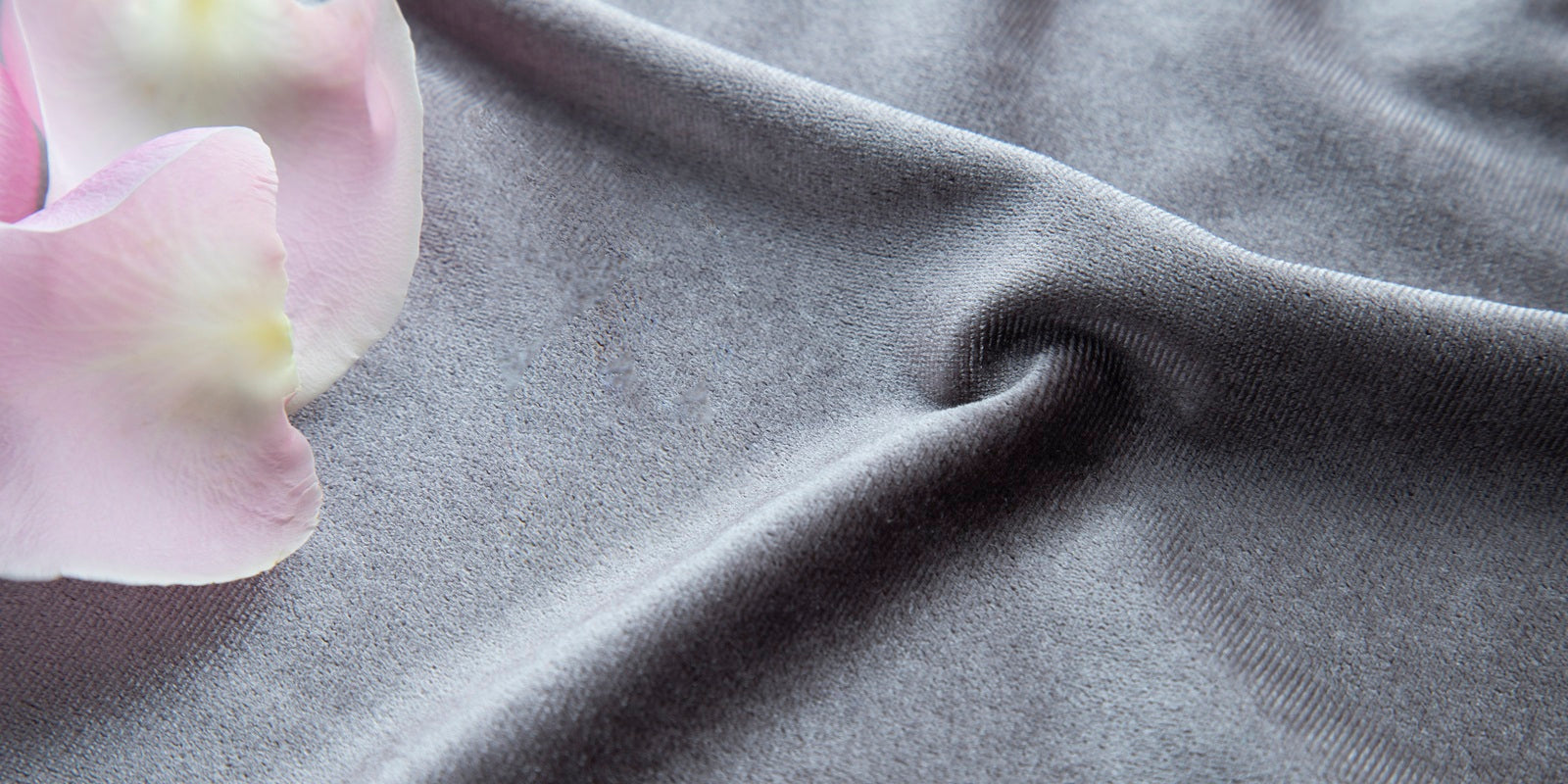
Why Is Cashmere So Expensive? Reasons Why Cashmere Is Costly
Short answer: Cashmere is expensive because the raw fiber is scarce, the yield per goat is tiny, and the path from mountain to sweater is painstaking. A cashmere goat produces only a few ounces of ultra-fine undercoat each year (just enough for part of a sweater), so herders must comb, sort, and dehair thousands of fibers by hand to get spinnable fluff.
Only the longest, thinnest staples (think ~14–16 microns) make premium grade, and that selectivity pushes prices up. Add the costs of ethical herding, climate-strained grazing lands, careful spinning to prevent pilling, and slow finishing that creates that cloud-soft handfeel, and you’ve built a luxury product before branding ever enters the chat.
In this guide, we’ll share why cashmere is expensive, and show you how to spot real quality (and when a cheaper “cashmere” is cutting corners).
What Makes Cashmere Different From Other Wool
1. The Soft Undercoat of Cashmere Goats
Cashmere isn't technically wool; it's hair. Specifically, it's the ultra-fine undercoat that cashmere goats grow to survive harsh mountain winters. While sheep produce wool uniformly across their bodies, cashmere goats develop two distinct layers of hair: a coarse outer guard hair and, beneath it, the precious cashmere undercoat.

This undercoat consists of microscopic fibers that measure just 14-19 microns in diameter, roughly six times thinner than human hair. The goats naturally shed this downy layer each spring as temperatures rise, creating a narrow window for collection. This biological cycle means cashmere can only be harvested once per year, unlike sheep wool, which can be sheared multiple times annually.
To understand the intricate science behind these remarkable fibers and their unique properties, explore our detailed guide on cashmere fabric fundamentals.
2. Fineness and Warmth of Cashmere Fiber
The microscopic structure of cashmere fibers creates air pockets that trap warmth without weight. A single cashmere fiber contains millions of tiny scales that interlock when spun, which creates a fabric that's simultaneously strong and ethereally light. This cellular structure makes cashmere eight times warmer than sheep's wool and lighter.
Reasons Why Cashmere Is So Expensive
1. Limited Supply and Scarcity
A single cashmere goat produces a small amount of usable fiber, mostly 150-250 grams per year. To put this in perspective, that's roughly enough cashmere for one lightweight sweater from every four to six goats. The finest cashmere comes from goats that produce even less, sometimes as little as 100 grams annually. This yield represents only the pure cashmere undercoat. The raw collected fiber contains guard hairs, debris, and other impurities that must be removed.
After processing, the actual usable cashmere often represents less than half of the original collection. A goat might contribute only 75-100 grams of pure cashmere fiber per year. The mathematical reality is that cashmere goats simply cannot produce enough fiber to meet global demand at any price point that would make cashmere affordable.
2. Intensive Production Process
Unlike sheep, cashmere goats cannot be sheared. The precious undercoat must be carefully combed out by hand during the natural molting season, which lasts just a few weeks in late spring. This labor-intensive process requires skilled herders who can separate the fine undercoat from the coarser guard hairs without damaging either.
The combing process itself is an art form. Experienced herders use specially designed combs to gently tease out the cashmere fibers while the goat remains calm and comfortable. Rushed or improper combing can damage the fibers, contaminate the cashmere with guard hairs, or stress the animals. A single goat might require 30-60 minutes of careful combing.
Some producers attempt mechanical collection methods, but these invariably reduce quality. The delicate cashmere fibers can be broken or contaminated with guard hairs, creating inferior raw material that produces scratchy, short-lived garments. Hand-combing remains the only method for obtaining truly premium cashmere.
3. High-Quality Standards
Pure cashmere garments contain 100% cashmere fiber with no blending of other materials. These pieces represent the pinnacle of cashmere quality but command the highest prices. Many commercial "cashmere" products actually contain percentages of wool, silk, or synthetic fibers to reduce costs.
Cashmere blends aren't necessarily inferior products, but they offer different performance characteristics. A cashmere-wool blend might be more durable and less expensive while sacrificing some softness and warmth. Cashmere-silk blends can add strength and luster but change the feel and drape of the fabric.

100% oversized cashmere pullover
The key issue with blended products is transparency. Many retailers fail to communicate the blend percentage, leading consumers to believe they're purchasing pure cashmere at a discount. In reality, a sweater labeled "cashmere" might contain as little as 5% cashmere fiber. While this is enough to provide some softness, it’s nowhere near the performance of pure cashmere.
Experience the full range of authentic luxury fibers in our comprehensive cashmere collection, featuring pieces that showcase the true potential of premium-grade materials.
4. Demand for Cashmere Products
Cashmere has maintained its status as the ultimate luxury fiber for centuries, transcending fashion trends and economic cycles. Unlike synthetic alternatives that come and go, cashmere's natural properties (incredible softness, lightweight warmth, and elegant drape) cannot be replicated artificially.
The aesthetic appeal of cashmere also goes beyond fashion. A well-made cashmere garment possesses an unmistakable quality that's immediately apparent to the touch. The way cashmere moves with the body, its subtle luster, and its ability to maintain shape while providing comfort create a wearing experience that synthetic materials cannot match. This timeless appeal makes it in demand at all times.
Sometimes, parents love to pass cashmere pieces to their children because they remain valuable decades after production and never truly go out of fashion. This enduring desirability supports premium pricing across the market.
For those seeking versatile layering pieces that exemplify cashmere's elegant drape and sophisticated styling, explore our cashmere shrugs designed for effortless sophistication.
How to Identify Authentic Cashmere
Authentic cashmere identification requires multiple verification methods:
1. The touch test
The touch test remains the most reliable. Genuine cashmere feels impossibly soft and lightweight, with no scratchiness or stiffness. However, some synthetic blends can approximate this feel. Run your hand across the surface. Premium cashmere feels uniform, while lower quality pieces may have thin spots or varying textures that indicate uneven fiber distribution or blending.
To develop your ability to distinguish authentic cashmere texture and understand what premium quality should feel like, read our comprehensive cashmere feel guide that covers the nuances of genuine luxury fiber.
2. The burn test:
The burn test is one of the most reliable ways to identify genuine cashmere. Take a few strands from an inconspicuous area and carefully burn them. Real cashmere will smell like singed hair and leave behind a soft, powdery ash. By contrast, synthetic fibers melt, and produce a chemical odor and hard, dark beads instead of ash.
3. Brand inspection:
Label inspection is crucial but insufficient alone. Look for specific information about fiber origin, grade, and blend percentages. Vague labels like "cashmere blend" or missing care instructions often indicate lower quality or synthetic alternatives.
The garment's construction reveals manufacturing quality. Look for tight, even knitting with no loose stitches or irregular patterns. Seams should lie flat and show consistent tension. Premium cashmere manufacturers, like Puracashmere, invest in skilled craftspeople who understand how to work with delicate fibers.

Men’s ribbed 100% cashmere half zip
4. Price:
Price serves as a reality check. Genuine cashmere sweaters rarely cost less than $300-400 retail, and premium pieces start around $800-1000. Significantly lower prices usually indicate blends, lower grades, or synthetic alternatives marketed as cashmere.
Conclusion
So there you have it. Cashmere isn't expensive because brands are trying to rip you off. It's costly because each goat only produces about 150-250 grams per year, and you can't exactly speed that up or fake it with machines.
When shopping for cashmere, keep in mind that you're paying for something genuinely rare and labor-intensive. A quality piece will last you decades if you treat it right, which makes it a pretty smart investment. Just make sure you know what to look for because good cashmere feels incredible and holds up beautifully.
To ensure your investment maintains its luxurious feel and appearance for years to come, learn the essential techniques in our cashmere care guide that covers proper cleaning, storage, and maintenance.


Leave a comment
This site is protected by hCaptcha and the hCaptcha Privacy Policy and Terms of Service apply.